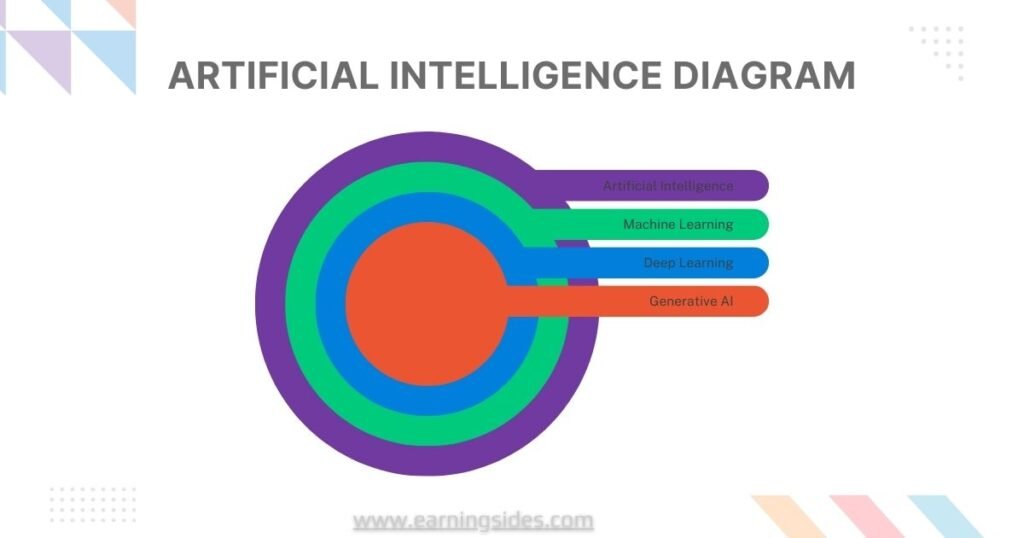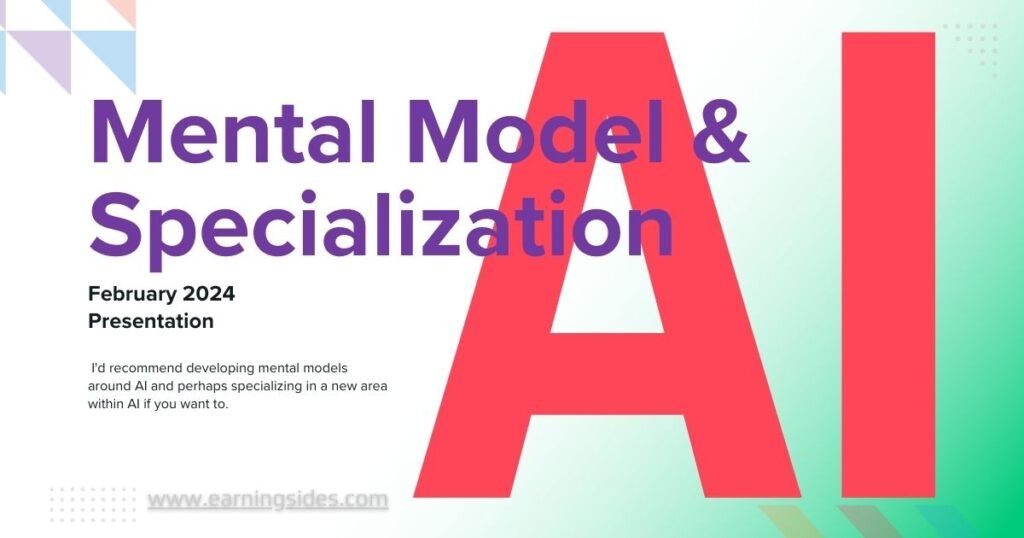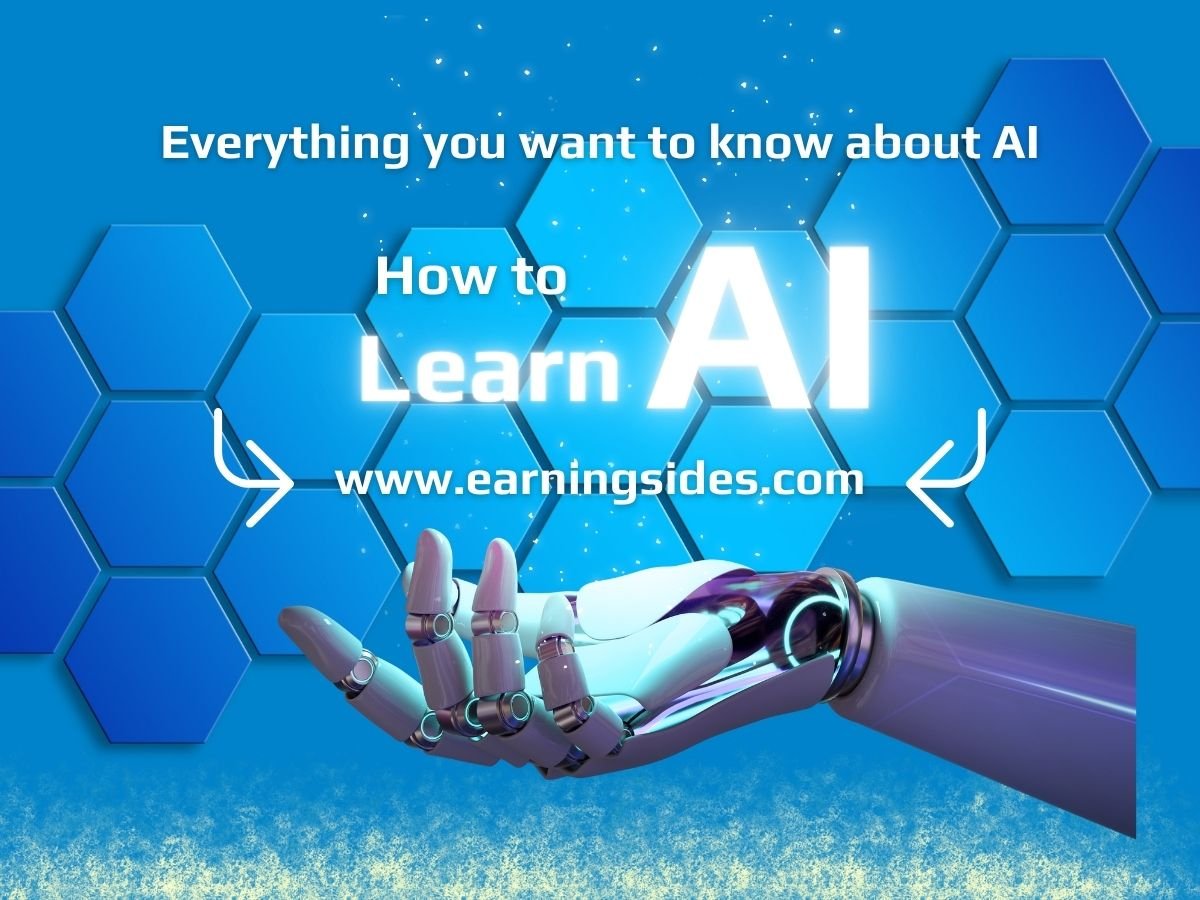Table of Contents
Introduction
In today’s article, I am discussing how to learn AI. If you want to jump into artificial intelligence and build things with AI and are interested in learning AI today, How should you start stuff as it is so fast-changing? My stomach hurts whenever I think about it. Lots of open-source tools and models are being created every single day. Microsoft Copilot, which brings AI to all Microsoft Office applications, has been launched recently.
So, if your hands touch the keyboard for work, this will change your job in the next few years. This motivates me if something will change my life and work forever. I want to learn everything about it. I want to know how AI is built, how to make with AI, and how to use it to enhance my work. As someone working in the tech field, I think you want to be able to build things with AI rather than consume it.
So today, I’ll be sharing a road map as a one-stop shop for you to expand your AI skill set, learn the fundamentals of AI, and learn to build with AI. Even if you don’t have any background in machine learning mathematics, statistics, or programming, I hope you walk away with some valuable ideas of where to start. Let’s move further.
Why Should You Learn AI
So why should we bother learning AI? AI machine learning and profound learning have existed since the 1950s. The AI we often talk about today is generative, a subset of machine learning and deep learning productive. AI can now write code to generate standing images, write music, diagnose rare conditions, create outlines for presentations, read images, and much more. Companies are looking to implement AI solutions to solve these specific problems.
This is a gold mine because everything is still so new. So, if you have the knowledge and know-how to build things with AI, you can create colossal invites as with anything in its early days. AI models still have many issues that need to be solved. They are not yet reliable or stable. They potentially possess biases, among other things. That’s why AI needs more people who have an in-depth understanding and can get to the bottom of the technologies to solve various problems.
Even if you don’t build things yourself, the knowledge can help you avoid misunderstanding and misinformation. For example, AI can do everything if you have the right plugins. Low Code / No Code Approach
Of course, there’s no size fit or road map for learning AI. You might have seen a lot of low-code or no-code tools to help you get started with AI and even develop things like an AI chatbot. You can play with them to feel how things work and what is possible and even build great real-world solutions. As you get into it, you might realize those tools might feel like a little black box.
They might not be so flexible that you can customize many things, or sometimes your solution works and sometimes fails. So, if you want to learn how artificial intelligence works and build reliable, scalable tools tailored to your specific use case. I think that’s when you hit the ceiling and can’t rely solely on those local platforms anymore. I often prefer a solid understanding of how things work from the ground up. So, let me walk you through a roadmap for learning AI.

Programming (Python)
On the fundamental level of learning AI, you want to learn the basics of programming. Python is one of the most used programming languages for machine learning and deep learning AI. So, some coding knowledge in Python would be essential for working with Python. You can certainly use several ideas or integrated development environments, for example, visual Studio Code, By Charm, or Jupiter Notebook. Jupiter Notebook is my favourite environment to start learning Python.
You can use any of these tools, and they are entirely free. If you’ve never coded in Python before, get at least familiar with the four basics of Python.
- Data types and the operations that you can do on them
- Data structures and how to work with them
- Conditionals loops and functions
- Object-oriented programming and using external libraries
When learning Python, the essential libraries are NumPy, for completing and working with numerical data, and Pandas, for wrangling tabular data or data frames. When you are already familiar with those libraries.
You can start learning some other libraries that you can use for your AI project. For example, Matplotlib is a popular library for data visualization. SpaCy is safe for basic text processing functionalities and working with large language models. LangChain is a handy library for learning to develop multiple applications on LLMs. What’s excellent about Python is that there are so many open-source libraries that you can use to create almost anything you want.
Git
The next thing I’d recommend you in learning AI is to learn Git version control. If you’re not yet familiar with it, Git is an open-source software for tracking changes in your project, basically managing versions of your project. Version control is essential. When collaborating with others on large or complex projects, there are just a few concepts you need to understand to start using Git, as vital in this diagram.

The funny thing is that many people get confused with GitHub. GitHub is the hosting platform for Git repositories so that you can share your project with others across the internet. Meanwhile, Gitt is the software itself. You can directly see and contribute to other people’s projects through GitHub.
So, how can you start using Git? The easiest way is to install GitHub Desktop, a user interface to help you work with Git, or if you prefer to use the terminal, you can also interact with Git through the terminal comments. I always keep a small cheat sheet to remind me of some common Git comments, which I find super convenient and helpful.
APIs
Another essential thing to your learning AI journey is using APIs. Knowing how to use an API is a magical skill that opens up a new world of possibilities for learning AI. API stands for application programming interface, and it’s a way for computer programs to communicate with each other. There are two jargon you need to learn. Yeah, just two API requests, which are also referred to as API calls and API responses.
Depending on the API, you can request data from model prediction. In ChatGPT’s case, you’ll be limited to the chat interface on the OpenAI website without knowing how to use the API. Don’t get me wrong. I love the ChatGPT website, but you can’t develop your tool this way or integrate the AI model into your current system.
Neural Networks
On to the next level of how to learn AI, we are concerned with the theoretical fundamentals of AI. I recommend you at least get some high-level theoretical understanding of learning AI and its subfields, such as:
- Machine learning
- Neural networks and deep learning
- Optionally computer vision
- NLP (Natural language processing)
- Reinforcement learning
If we look at this diagram again

Deep learning is a subset of machine learning. Traditional machine learning algorithms mostly fall into supervised learning. This is when you have the target labels to train the prediction model on or unsupervised learning when there are no target labels. In general, these algorithms only work for tabular data. Think of data tables, with each record being a row and each data feature being a column. If you’re interested, you can quickly review some machine learning jargon and get a high-level understanding of these algorithms.
They’re all fantastic to learn that since AI today uses deep learning. You can probably jump into deep learning to save time, and I think you will. Anyway, learn the essential machine learning concepts along the way, as we just briefly talked about the neural network, which is the algorithm behind deep learning. It works incredibly well for unstructured data like text and images for neural networks. You want to understand the main concepts such as:
- Forward propagation
- Backpropagation
- Gradient descent algorithm
- How rates are updated in the network
If you like some math, you can try understanding all the underlying calculations in the neural network. They are not too difficult to understand. So please don’t shy away from it. The neural network is pretty simple and maybe even a bit inferior from the mathematical, statistical point of view.
Neural Network Architectures
The next level of how to learn AI, there is no fancy here to the fathers of deep learning. But when you start many, many network layers together into complex architecture, this is when things get interesting. The neural network can now begin to recognize digits, classifying cats and dogs, to predict the subsequent tokens in the case of LLMs today. Convolutional neural networks used to be a prevalent architecture for deep learning with images.
After all, they can recognize patterns on images and record neural networks, which used to be very popular for text modelling because they could understand sequences. However, these architectures have become pretty solid since the invention of transformers architecture in 2017. This is the architecture behind the foundation language models. Nowadays, transformers are performed by pretty much all the earlier architectures.
So you might want to jump into it right away and reverse engineer the knowledge. If you see any gap as you work with the AI models. You also want to get yourself. A high-level understanding of how the foundation models underlying them are trained. In general, they introduced it through an unsupervised process. It’s up to you to learn more about the nitty-gritty details of teaching a language model.
Text Embeddings & Vecter Store
The next step in your journey how to learn AI. You might hear the common term text embeddings when working with language models. This is a beneficial concept to understand: text embedding converts text into vectors of numbers. Nowadays, we often forget that computers cannot understand human languages. Computers can only understand numbers. So, this conversion step is essential. There have been many embedding models created with ever more intelligent ways to capture meanings into those vectors no matter what you’re learning where you are on this journey.
Real-World Projects
The next level for learning AI is you can build relevant projects to get your hands dirty and experiment with things. This will help you connect the dots and challenge your understanding. For example, if you’re learning Python, you can build your first neural network in Python using Keras or TensorFlow library, which is only a few lines of code. If it’s too high level, you can try to write a neural network and implement gradient descent from scratch With NumPy.
When learning the theories, a real-world project would be to pick one specific concept you find interesting and write a blog post or make a video. This will help you understand the concept more deeply and help others. If you’re ready to tackle more complex AI projects, you can build a real-world application.
For example, you can create a document retrieval app to create a chat with a PDF application where people can upload a document and ask specific questions based on the papers, or you can create your chatbot. I also want to mention that no matter what project you do, big or small, make sure you document them for reference for yourself and share them with other people through articles and social media posts. You never know how many people might find it helpful.
Mental Model & Specialization
Next, in learning AI, I’d recommend developing mental models around AI and perhaps specializing in a new area within AI if you want to. Reading books about AI is a great way to go through the noise on social media and get a more well-rounded background of AI. This also equips you with the proper framework and tools to reason and interpret things you see or hear about AI today. You can also find my AI book list at the end of the article. I personally also find it so crazy. How important is stuff around AI? That is not talked about more widely in the mainstream media.

Many topics around AI don’t make headlights. For example
- Advanced prompt engineering methods to improve the quality of the LLMs response, like self-consistency, a chain of thought prompting, or automatic prompting.
- Autogen project by Microsoft allows you to develop LLM applications using multiple agents that can converse with each other to solve tasks.
- Advanced document QA with multimodel documents that can work well with complex tables, images, and other data structures.
- AI security and hacking: The other day, I watched a YouTube video of a researcher who uncovered severe security issues with machine learning models. This is a very overlooked area until now. So, if you know computer security well, please do humanity your favor and look into this.
- AI safety. Research studies the area to find ways to align AI’s goals with human goals. Because if we fail to do this, we are screwed.
- AI regulations. If you’re interested in laws in Europe, the EU AI Act is one of the big things that are coming to regulate the use of AI. The U.S. government also recently passed an executive order on the safe, secure, and trustworthy development and use of artificial intelligence to address the potential risk of AI. No one knows how helpful these regulations are going to be.
Extra Resources About How to Learn AI
So, suppose you want to dive into any of these areas to learn AI. In that case, it’s generally relatively easy to find information on these topics by reading books, research papers, and articles and watching videos on YouTube. For example, follow some newsletters like the batch newsletter by inquiring to get informed about some critical AI developments. Medium is also where I often find beneficial articles. I sometimes dive into research papers to learn about new, incredible research.
We’re still in the very early days of AI, and we don’t know how things will turn out in the next few years. But one thing we know for sure is that things are changing faster and faster. The only way to keep up is to learn continuously. So, I hope you found this article helpful, and if you like the article, write a comment and share it with your interests, friends, colleagues, and family members for future content around data science and AI on the notification of our blog.
List of Books You have to read for learning AI
- Life 3.0 (Max Tegmark)
- Superintelligence (Nick Bostrom)
- The Coming Wave (Mustafa Suleyman, Michael Bhaskar)
- Power and Progress (Daron Acemoglu, Simon Johnson)
- Human Compatible (Stuart Russell)
- The Alignment Problem (Brian Christian)
- Artificial Intelligence: A Modern Approach, Global Edition (Peter Norvig, Stuart Russell)
- I, Human: AI, Automation, and the Quest to Reclaim What Makes Us Unique (Tomas Chamorro-Premuzi)
You must read these books to learn AI and gather knowledge on how to learn AI. If you are also interested in earning with AI, check out our blog post on 7 great ideas to make money with ChatGPT Marketplace by simply tapping the title. Thank you for reading. Bye.
How to learn about AI?
It’s generally relatively easy to find information on these topics by reading books, research papers, and articles and watching videos on YouTube.
How are the ways AI learns similar to how you learn?
I’ll be sharing a road map as a one-stop shop for you to expand your AI skill set, learn the fundamentals of AI, and learn to build with AI. Even if you don’t have any background in machine learning mathematics, statistics, or programming, I hope you walk away with some valuable ideas of where to start.











1 thought on “How to Learn AI in 2024 – Want to Become a Master”